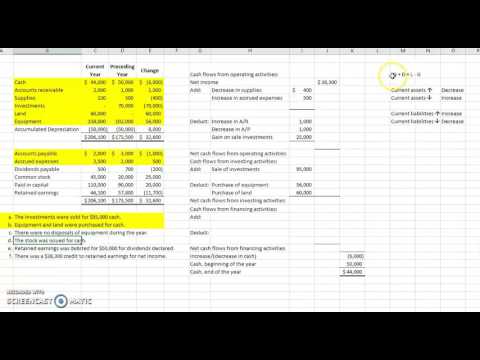Content

Examples of such assets include cash & equivalents, marketable securities, accounts receivables. It helps maintain business efficiency by determining the debits and credits of business transactions. Here are a few of these equations along with a brief explanation of how they work. You may have made a journal entry where the debits do not match the credits. This should be impossible if you are using accounting software, but is entirely possible if you are recording accounting transactions manually. In the latter case, the only way to correct the issue is to review all entries made to date, to find the unbalanced entry.
The net assets part of this equation is comprised of unrestricted and restricted net assets. Metro Corporation earned a total of $10,000 in service revenue from clients who will pay in 30 days. Our goal is to deliver the most understandable and comprehensive explanations of financial topics using simple writing complemented by helpful graphics and animation videos. On 22 January, Sam Enterprises pays $9,500 cash to creditors and receives a cash discount of $500.
Assets
Revenue and expense accounts were used temporarily and were ultimately closed to Retained Earnings. As a result, the income statement account balances were set to zero and the Retained Earnings balance increased by the net income amount of $800. Indirectly, revenue and expense accounts are part of this accounting equation since they impact the value of stockholders’ equity by affecting the value of Retained Earnings. The accounting equation ensures for every debit entry made, there is a corresponding credit entry made. Ledger AccountLedger in accounting records and processes a firm’s financial data, taken from journal entries.
Shareholders’ equity is the total value of the company expressed in dollars. Put another way, it is the amount that would remain if the company liquidated all of its assets and paid off all of its debts. The remainder is the shareholders’ equity, which would be returned to them. The double-entry practice ensures that the accounting equation always remains balanced, meaning that the left side value of the equation will always match the right side value. The accounting equation is a concise expression of the complex, expanded, and multi-item display of a balance sheet. It can be defined as the total number of dollars that a company would have left if it liquidated all of its assets and paid off all of its liabilities.
The Wharton Online and Wall Street Prep Private Equity Certificate Program
Equity is the difference between the assets and liabilities, or $500. Discover more about the primary accounting equation, other accounting formulas and their applications from knowledgeable faculty and real-world examples. With the information that is given in the example, we see that Ed has a store that is valued at $40,000 and equipment that is valued at $10,000. Looking back, we see that Ed owes the bank $25,000 and his employee $15,000.
What are the 3 accounting equations?
- Assets = Liabilities + Owner's Capital – Owner's Drawings + Revenues – Expenses.
- Owner's equity = Assets – Liabilities.
- Net Worth = Assets – Liabilities.
Closing stock is not included in the trial balance as it does not reflect a transaction that has a dual aspect – it is merely the purchases that have not been sold in the year. If there is any opening stock it is included in the trial balance at the year end. The next activity should help you to understand the importance of both forms of the Accounting Equation. So let’s say one day, someone calculates how much you own (house, car etc…) less how much you owe (to the bank, to friends and family etc…) what’s left is how much you’re ‘worth’ in financial terms. ABC collects cash from the customer to which it sold the inventory.
What is the Double-Entry Accounting System
The shareholders’ equity section tends to increase for larger businesses, since lenders want to see a large investment in a business before they will lend significant funds to an organization. Calculating the total assets on the balance sheet for the period of consideration. An asset can be https://kelleysbookkeeping.com/ cash or something that has monetary value such as inventory, furniture, equipment etc. while liabilities are debts that need to be paid in the future. For example, if you have a house then that is an asset for you but it is also a liability because it needs to be paid off in the future.
- The accounting equation forms the basis of double-entry accounting, where every transaction will affect both sides of the equation.
- INVESTMENT BANKING RESOURCESLearn the foundation of Investment banking, financial modeling, valuations and more.
- However, equity can also be thought of as investments into the company either by founders, owners, public shareholders, or by customers buying products leading to higher revenue.
- Just keep adding or removing items as per the transactions in this simple equation and keep it balanced at all times to know that you are going well.
We follow strict ethical journalism practices, which includes presenting unbiased information and citing reliable, attributed resources. The merchandise would decrease by $5,500 and owner’s equity would also decrease by the same amount. For every business, the sum of the rights to the properties is equal to the sum of properties owned. Balance SheetAssets SectionThe resources with economic value which can be sold for money post-liquidation or are anticipated to bring positive monetary benefits in the future.
Examples of Accounting Equations
It is used to analyze whether the assets are financed by debt or business owner funds with the help of double-entry accounting. It differentiates between business assets, liabilities, and equity. It forms a clear picture of any business’s financial situation. The accounting equation aims to determine business progress on any given day.


